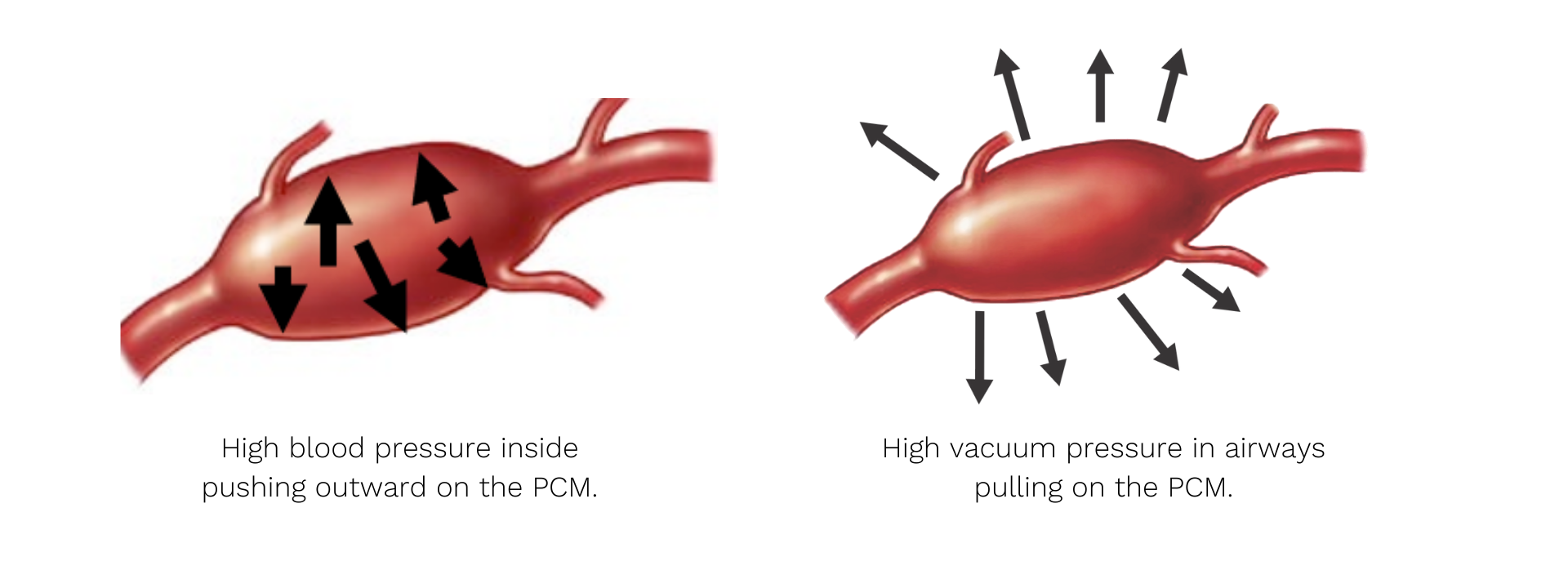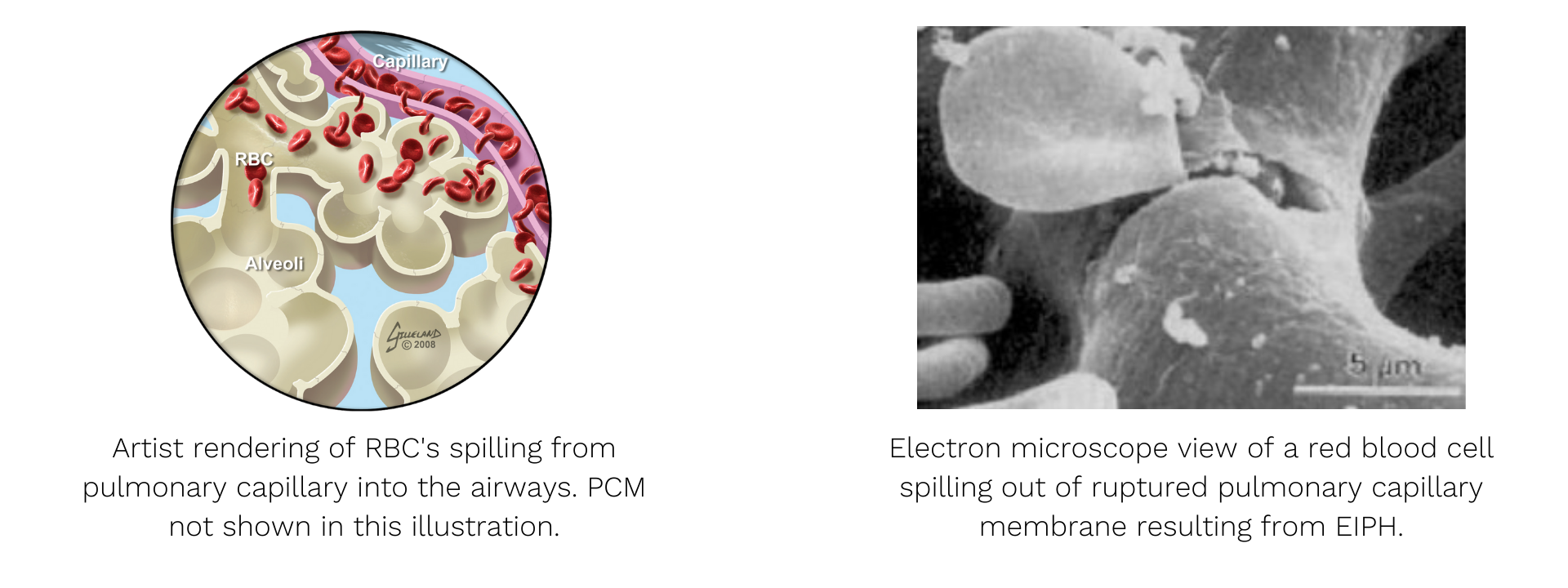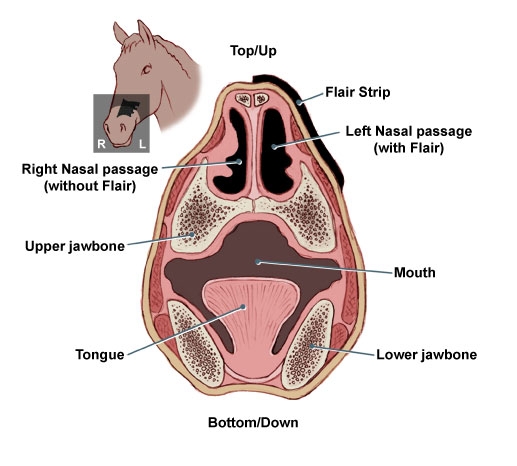Q&A About EIPH with Dr. Howard Erickson*
Feb 17th 2021

What is EIPH?
Exercise Induced Pulmonary Hemorrhage (EIPH) is the presence of blood in the airways during or after exercise. It occurs when the pulmonary capillary membranes (PCM) deep within the lungs ruptures. Essentially all horses are affected by EIPH during intensive exercise.
What is the PCM?
The PCM is a membrane that separates the pulmonary capillaries from the airways deep within the lungs. At only 1/100th the thickness of a human hair, it is very fragile. However, it is one of the things that makes horses super athletes by permitting extremely efficient transfer of oxygen and carbon dioxide into and out of the bloodstream during inhalation and exhalation.
What causes EIPH?
In a nutshell, during exercise high blood
pressure (needed to power exercise) pushes on the PCM from inside the pulmonary
blood vessels and high vacuum pressure (needed to inhale large amounts of air)
pulls on the PCM from the airway side. These forces exert massive stress on the
PCM. 
EIPH occurs when the combined high blood pressure and high vacuum pressure exerted on the PCM causes the PCM to rupture and release blood into the airways.

Other factors may contribute to EIPH, including surface conditions, speed, age, respiratory health, and environmental conditions. EIPH has not been shown to be caused by blood clotting abnormalities.
What are proven ways to prevent EIPH?
Nothing has been shown to completely stop EIPH.
Only two options have been repeatedly shown to reduce EIPH. Both work by reducing the stress on the PCM:
- FLAIR® Nasal Strips – support the nasal passages to reduce airway resistance and decrease the vacuum pressure pulling on the outside of the PCM.
- Furosemide (Salix™, formerly Lasix™) – is a potent diuretic that reduces blood pressure that is pushing from inside the pulmonary capillaries on the PCM.
How do FLAIR Strips work?
FLAIR Strips make breathing easier. When horses breathe hard, the soft tissues overlying the nasal passages are sucked in, reducing the airway diameter. This reduction in diameter increases resistance to airflow into the lungs. By supporting the soft tissues overlying the nasal passages, resistance to airflow into the lungs decreases. This decreases the vacuum pressures pulling on the outside of the PCM to reduce EIPH.

Click here to view the science on FLAIR Strips.
*Dr. Howard Erickson is Professor Emeritus at Kansas State University. He was a pioneer in the foundational research of EIPH in horses. He and his team at KSU have conducted numerous scientific research studies and published extensively on the topic of EIPH.





